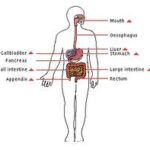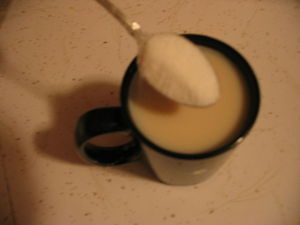What Is Lactose Intolerance?
The inability to digest significant quantities of lactose (236 ml.), the major sugar constituent of milk and milk products is known as Lactose Intolerance.
One of the reasons of lactose intolerance is the shortage of lactase, an enzyme that is produced by the cells that border the inside of the small intestine. The function of lactase is to break down lactose into the simpler forms of sugar, galactose and glucose, for absorption and use by the body.
Infants and toddlers have high levels of lactase so that they can digest the milk they get from their mother.
A genetic trait, in approximately three fourths of the population of the world, causes levels of lactase to drop irreversibly after weaning. By the time the child reaches adulthood, most of the activity of lactase is lost.
This drop in the levels of lactase activity affects most of the population, but not everybody show symptoms of lactose intolerance after the consumption of lactose in normal levels.
The development of symptoms of lactose intolerance seems to be linked to the capability of a specific kind of bacteria (a beneficial one), known as lactic acid bacteria, to convert lactose into the simpler forms of sugar. Those who do not develop symptoms of lactose intolerance have more lactic acid bacteria than others in their intestines. People who do develop symptoms are lactose intolerant.
Symptoms Of Lactose Intolerance
The symptoms of lactose intolerance are:
Ø Diarrhea
Ø Bloating
Ø Nausea
Ø Cramps
Ø Gas
Diarrhea is caused by the remains of undigested lactose in the intestines since excess quantities of water are drawn into it by lactose. There is the production of hydrogen, resulting in the production of gas and causing bloating.
What Are The Natural Remedies?
Probiotics and Acidophilus
One of the many kinds of lactic acid bacteria is Acidophilus. Lactose is broken down into short-chain fatty acids by lactic acid bacteria in the lining of the intestines. Other substances are also formed during this process. This helps the colon to absorb these substances including the fatty acids.
Lactic acid bacteria can be had as dietary supplements. They are usually available as powders, tablets or capsules in health food stores in the refrigerated section. They can also be bought online, in some grocery and drug stores.
There are many varieties of lactic acid bacteria. Those that are most used often are:
Ø Streptococcus thermophilus
Ø Lactobacillus plantarum
Ø Lactobacillus reuteri
Ø Streptococcus salivarius
Ø Lactobacillus bulgaricus
Lactobacillus acidophilus A firm Enzymatic Therapy manufactures a product known as Acidophilus Pearls. It contains Bifidiobacterium Longum and Lactobacillus Acidophilus and does not require refrigeration.
Acidophilus and such other probiotics are popular natural remedies used to reduce symptoms of lactose intolerance and also to prevent it.
Despite the popularity of these probiotics, it cannot be said that all studies have found that they can help reduce the symptoms of lactose intolerance. Out of nine studies conducted, three were found to reduce breath hydrogen levels and three had both positive and negative results. Breath hydrogen test is a non-invasive one that is widely used for assessing lactose intolerance. This is based on the fact that individuals with lactose intolerance have increased levels of the gas hydrogen.
Some of the natural remedies that can be used to treat lactose intolerance are detailed below.
Yogurt
Yogurt contains live active bacteria and is thought to work in the same way as probiotics in improving lactose digestion. The consumption of yogurt causes bile acids to disrupt the cell walls of the bacteria contained in it. An enzyme called beta-galactosidase, which is related to lactose, is released into the intestines and enhances lactose digestion. Not all yogurt have this effect; it must contain active bacteria.
Even though yogurt is a product obtained from milk, many people with lactose intolerance do not show any symptoms on its consumption, even the yogurt that does not have active bacteria in it.
Acidophilus Milk
The addition of Lactobacillus Acidophilus to cold milk produces acidophilus milk. Some studies using this milk have found positive results and some have not shown any improvement.
Lactase Supplements
Tablets or capsules containing lactase may be consumed with lactose containing food. Lactase supplements are needed only for those individuals who consume large quantities of lactose. If one kind of lactase supplement is not effective, some other brand could be tried. Some find the tablet form of the supplement more effective than the chewable kind.
Diet
Some people with lactose intolerance tend to avoid lactose containing foods, but that is not generally necessary and may lead to calcium deficiency.
Some strategies that people with lactose intolerance can follow include:
Ø Drink a cup or less of milk at a time
Ø Try lactose reduced milk
Ø Eat milk and milk products together with meals
Ø Try yogurt in place of milk
If You Have Lactose intolerance it is essential that you consult your physician. Lactose intolerance can also be due to medications or some other underlying condition such as:
Ø Alcoholism
Ø Zollinger- Ellison Syndrome
Ø Diabetic Gastropathy
Ø Carcinoid Syndrome
Ø HIV Enteropathy
Ø Giardiasis
Ø Celiac Disease





